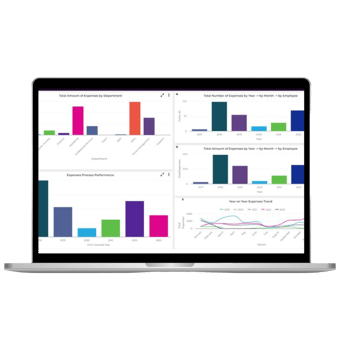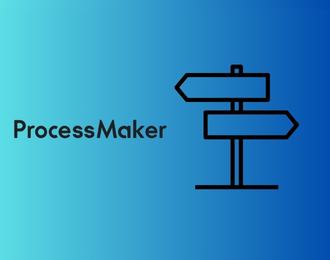In the dynamic landscape of today's business world, the ability to make informed decisions quickly can be the difference between success and at worst, failure or at minimum, stagnation. Real-time data analytics has emerged as a game-changer, offering organizations a powerful tool to gain instant insights into their operations, customer behavior, and market trends. Here we will look into the reasons why workflow analytics reporting on real-time data is vastly superior to the slower, manually created reports that we are all too familiar with.
 Our business is all about organizations digitalizing their processes. Making operations more efficient and utilizing resources to their optimum. Doing this is really important but what happens next – you need continuous improvement. The ability to analyze your data through Analytics Reporting is vital. For continuous improvement, you need to see variances, delays, stretches, etc. as soon as possible. You can then react quickly by either amending the processes so that these delays are mitigated or if it’s an anomaly, by fixing the issue. Either way you can include what-if scenarios within the processes to handle those oddities and improve the overall efficiency.
Our business is all about organizations digitalizing their processes. Making operations more efficient and utilizing resources to their optimum. Doing this is really important but what happens next – you need continuous improvement. The ability to analyze your data through Analytics Reporting is vital. For continuous improvement, you need to see variances, delays, stretches, etc. as soon as possible. You can then react quickly by either amending the processes so that these delays are mitigated or if it’s an anomaly, by fixing the issue. Either way you can include what-if scenarios within the processes to handle those oddities and improve the overall efficiency.
Your digitalized processes are the foundation, the Analytics give you the signposts to support continuous improvement. Obviously, Analytics provide a lot more and support decision-making and internal/external reporting but for any organization who take digital process seriously, the ability to analyze your data is paramount for continued success.
 1. Agility in Decision-Making
1. Agility in Decision-Making
One of the primary advantages of real-time data analytics is its ability to facilitate agile decision-making. It’s all become quite frantic in the workplace, opportunities and challenges arise swiftly. Waiting for manually created reports can lead to missed opportunities or delayed responses to issues. Real-time data allows organizations to analyze information promptly, enabling them to make timely and strategic decisions that can impact many areas of the business, including the bottom line.
Real-Time Data:
Companies leveraging real-time data enjoy a significant operational advantage. They can respond swiftly to market fluctuations, customer demands, and unforeseen challenges. Whether it's adjusting production schedules, optimizing inventory levels, or fine-tuning marketing strategies, the ability to act in real-time is a game-changer.
Discover even more benefits of real-time data powered by AI workflow automation.
Too Late Data:
In contrast, companies relying on inefficient manual processes face delays in decision-making. By the time data is collected, collated, and analyzed, opportunities may have passed, and issues might have escalated. This lack of agility can result in a sluggish response to market dynamics, putting these companies at a distinct disadvantage.
Consider the impact of real-time data for any form of safety operation within an organization. The information can have a direct impact on employees and/or the public. Workflow analytics can provide instant feedback on safety scenarios that need immediate attention, allowing the safety team to adjust strategies, notify all concerned, and maintain operations while remedial actions are performed by the appropriate resources. In contrast, relying on ad-hoc reactions would most definitely delay actions and could create impacts on health and safety, loss of earnings and loss of credibility. Obviously, the impacts could be far-reaching but there is no doubt that the results of accurate and prompt reporting yield improved outcomes.
.png?width=60&height=60&name=Digital%20eBook%20(37).png) 2. Improved Operational Efficiency
2. Improved Operational Efficiency
Workflow analytics contributes significantly to operational efficiency. Automated processes and constant monitoring enable organizations to identify bottlenecks and inefficiencies as they occur. This proactive approach allows for swift remedial action, leading to streamlined operations and cost savings.
An organization spends a lot of time and resources documenting and digitalizing multiple processes across different areas of the business. This in itself does lead to improved outcomes and efficiencies. How do you prove this? You report on those processes.
Yes, it’s more important to have the processes digitalized but the results of your hard work should be visible. It will actually inspire continued improvements, which is what process efficiency is all about.
For example, in construction, real-time monitoring of building compliance can help identify delayed activities or quality issues promptly. This timely detection enables appropriate teams to address problems before they escalate, minimizing downtime and optimizing the drive to meet deadlines. In contrast, relying on manually generated reports might mean discovering these issues after they have impacted construction, resulting in higher costs and potential customer dissatisfaction.
You also have the opportunity to tweak and improve the processes so that these delays can be minimized going forward. Including what-if and escalation procedures to enhance operations.
.png?width=70&height=70&name=Digital%20eBook%20(38).png) 3. Enhanced Customer Experience
3. Enhanced Customer Experience
In an era where customer experience is paramount, real-time data analytics empowers organizations to understand and respond to customer needs promptly. Whether it's tailoring marketing messages, customer communications, or addressing customer queries in real time, the ability to leverage instant insights is a key differentiator.
Too Late Data:
Companies relying on outdated data risk misreading customer preferences and trends. This can lead to misplaced investments, poorly targeted campaigns, and a decline in overall customer satisfaction. Nowadays customer experience is a key differentiator, delays in data utilization can result in a loss of competitive edge.
It makes complete sense to utilize the data that you are gathering to improve every facet of your business – this in turn will improve customer experience. Remember the ‘Customer’ can be and quite often is, internal.
.png?width=47&height=47&name=Digital%20eBook%20(39).png) 4. Reduction of Human Error
4. Reduction of Human Error
Manually created reports are inherently prone to human error. Data entry mistakes, miscalculations, and oversight can lead to inaccurate insights, jeopardizing the reliability of decision-making. Real-time data analytics, driven by automated processes, significantly reduces the risk of human error, ensuring the accuracy and integrity of the data being analyzed.
Real-Time Data:
Automated data collection processes reduce the likelihood of human errors, ensuring a higher level of accuracy and data quality. Real-time validation mechanisms can flag anomalies immediately, allowing for timely corrective actions.
Too Late Data:
Manual processes are susceptible to errors at various stages, from data entry to transcription. Inaccurate or incomplete data can lead to misguided decisions, impacting the overall effectiveness of strategic initiatives.
Conclusion
In the digital era, where information is power, real-time data analytics stands as a beacon of innovation and efficiency. The advantages it offers over slower, manually created reports are clear; agility in decision-making, improved operational efficiency, enhanced customer experience, adaptability to market dynamics, reduced human error, and seamless integration with emerging technologies.
As businesses navigate the complexities of a rapidly evolving landscape, the adoption of real-time data analytics becomes not just a competitive advantage but a strategic imperative. Organizations that embrace the power of instant insights position themselves at the forefront of innovation, ready to capitalize on opportunities and navigate challenges with speed and precision. In the eternal race for success, real-time data analytics isn't just a tool; it's the engine that propels businesses forward into a future where information is not just data but a catalyst for growth and excellence.
Organizations also give themselves the blueprint for continuous improvement, where changes to processes are driven by analyzed data.
When it comes to data, real-time information beats too-late data every time!
FlowForma's new analytics module, seamlessly integrates with FlowForma Process Automation which is easily activated with just the click of a button!
With FlowForma Analytics users can seamlessly build dashboards within the product without needing third-party tools like Excel or Power BI. Schedule a personalized demonstration of FlowForma Process Automation today to discover the benefits of built-in process automation analytics!
.png) By
By 




